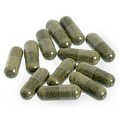Bulk sample, quantitative fungal culture [FC-Q]
Published: July 8th, 2009
Revised: March 21st, 2023
Solid or so-called “bulk” materials, such as wood, carpet, and other insoluble, solid items, can be evaluated by quantitative fungal culture to determine their culturable fungal content. All or a portion of the specimen is weighed, placed in a buffer solution and vigorously agitated to suspend adherent spores or vegetative hyphae. Aliquots of suspension are plated, the plates are incubated, and resulting colonies are identified and counted.
Although this methodology may seem straightforward, (indeed, in the laboratory it is a relatively simple procedure), the test is extremely difficult to standardize. This is because the surface area to volume ratios and densities of materials vary considerably, and most fungal colonization is likely to be restricted to the surface of the material. Although similarly sized portions of comparable materials could be reasonably compared using this test, the method may not provide a standardized basis for comparison of fungal load. Still, there remain a few indications for this test. For example, this approach may be informative where there is an interest to compare a  set of identical or nearly identical objects based on the concentration of culturable fungi recovered. Such an item might be an industrial part, a pharmaceutical active ingredient or formulated preparation, or a biomedical device, where items from the same or different lots are compared. This test is generally not useful for indoor environmental investigations.
set of identical or nearly identical objects based on the concentration of culturable fungi recovered. Such an item might be an industrial part, a pharmaceutical active ingredient or formulated preparation, or a biomedical device, where items from the same or different lots are compared. This test is generally not useful for indoor environmental investigations.
Field collection method
There is no specific field collection method for this test, per se. Items to be tested should be placed individually in a labeled tube or envelope to which a label containing all relevant sample information has been affixed. The test is semi-destructive, since depending on the size of the specimen, we may need to dissect and subsample it in the laboratory to obtain a suitably sized portion for analysis.
Laboratory code: FC-B
Service options

Results reporting
Results of this test are reported in Colony Forming Units per gram of material (CFU/g), and broken out according to species, species-group or genus observed (the level of identification depends on the taxon in question).



